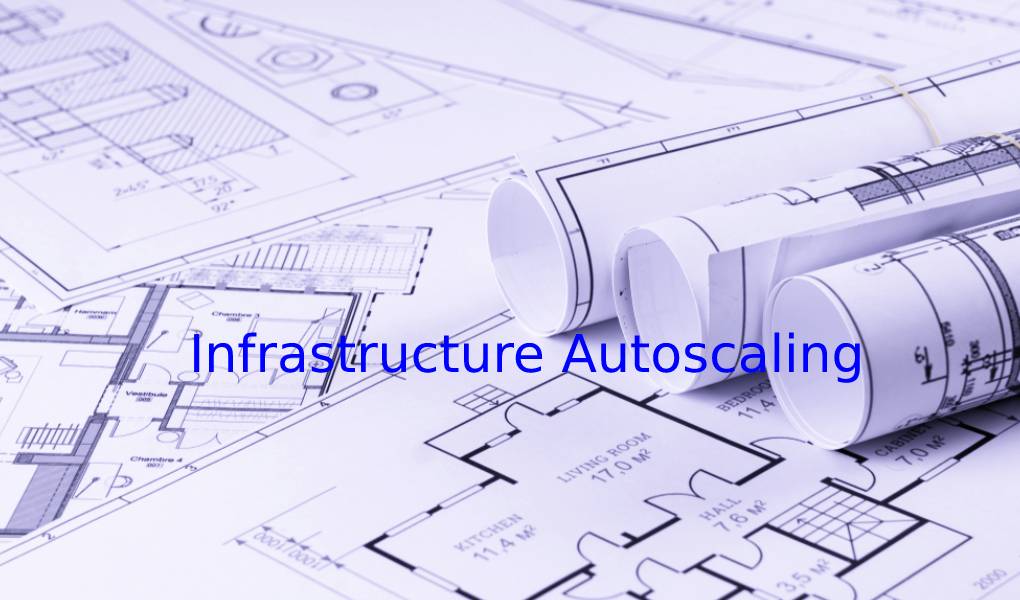Traffic to a site or application can vary widely: from a drop of tens to an increase of hundreds of percent relative to the average.Although we can roughly predict these changes based on our statistics and estimated demand, it is impossible to predict the traffic volume in advance accurately.
The autoscaling of the IT infrastructure allows us to survive these fluctuations without interruptions in work and drop-in services.We will tell you what it is when needed and how autoscaling can help businesses cope with the load and save on infrastructure.
Table of Contents
What Is Infrastructure Autoscaling?
Infrastructure autoscaling is an automatic increase or decrease in the number of IT resources involved to bring them in line with the load. To simplify, we can say that we are talking about a sufficient amount of resources at any given time, regardless of the current load level.
Autoscaling is only possible with virtual infrastructure. Can scale actual physical equipment only in manual mode: you need to purchase new capacities or equipment and connect them.
For example, when hosting infrastructure in a public cloud, a provider can provide almost unlimited resources – that is, almost instantly automatically connect new capacities or virtual servers as needed. In this case, the client pays only for the used resources.
Why Autoscale Is Needed
When the load exceeds the capabilities of the IT infrastructure, sites, applications and services begin to malfunction. In the worst case, they become unavailable and cannot process customer requests.
As a result, the company not only loses profits but also often gets reputational damage. Not only small and medium-sized companies, but even market leaders may find themselves in a similar situation.
Here are some recent examples:
- Back in March 2020, before the introduction of the self-isolation regime, Vkusville faced an unprecedented increase in demand for food delivery. The company’s application began to work intermittently.
- The Epic Game Store launched a giveaway in May 2020 for GTA 5, the most popular and commercially successful game in recent years. The action results surpassed all expectations: the influx of applicants was so great that not only the site began to malfunction – many users could not even log into their accounts.
- NVIDIA is the largest graphics card manufacturer in the world. In September 2020, at the start of sales of a new video card, the load on the online store increased ten times. The site became unavailable, and along with it, the company’s postal services collapsed – for some time, users could not receive notifications by mail that the cards were on sale. NVIDIA had to spend money on the urgent transfer of the online store to more stable IT facilities.
What Are The Alternatives To Autoscaling?
An alternative to autoscaling is scaling the company’s IT resources manually on its own. It happens differently on traditional infrastructure and in the cloud.
Here we must remember that scaling can be vertical or horizontal. We are scaling up – increasing the overall IT capacity of the company by increasing the performance of existing equipment/system components. Horizontal scaling – increasing the total IT capacity of the company by connecting new equipment/components.
We Are Scaling Up Traditional Infrastructure
When scaling up, the company increases the capacity of the servers it uses to support the load. In this case, in regular times, the business uses the IT infrastructure with a large margin – a significant part of the time, only part of the available capacity is in demand. We can say that potent servers are used but, as a rule, with little load.
What Is The Essence
Such a solution can hardly be called economical – it’s like buying a spacious minivan for rare trips with family and friends to nature, but at the same time driving it around the city every day alone. Gasoline and operating costs will be inadequate for the tasks for which the machine is used most of the time. Likewise, with powerful servers – the problem is not that they are expensive by themselves. The problem is that the paid capacity is not used.
Another disadvantage of vertically scaling traditional infrastructure is its limited capacity. Sooner or later, the company will run into the capacity limit of the existing equipment, and the load beyond this limit will remain untreated. By analogy with a minivan: if at some point the group of friends turns out to be too large, someone will have to be left behind – you will not be able to put more people in the car than you have seats.
Scaling horizontally on its infrastructure has the same disadvantages as scaling vertically. Simplistically, this is about adding new equipment to the infrastructure and not about increasing the capacity of the existing one. The company is forced to spend money on acquiring and operating additional IT capacities that operate only at peak demand and are not in demand most or most of the time. These expenses include the cost of equipment and software for it, rental of premises, and salaries of IT personnel.
Manual Scaling In The Cloud
The company connects cloud capacities on its own as needed or according to a pre-set schedule. This solution eliminates additional costs for idle equipment, but it still has a drawback – IT staff must constantly monitor the load on the system, periodically connect and disconnect additional power.
Scaling on a schedule based on historical data does an excellent job of dealing with regular and predictable changes in traffic volume but still requires human backup. It is necessary for situations where traffic exceeds the predicted volume. In this case, there may be delays in processing the load. Can avoid all of the above problems by using auto scaling systems in the cloud.
How Auto Scaling Works In The Cloud
If you rented ordinary cloud servers, you could configure autoscaling using monitoring systems so that new capacities are connected automatically upon a signal that the load has exceeded a certain level. It requires skilled administrators with a knowledge of cloud infrastructure and customization of automation tools.
If your services are packaged in containers and use cloud Kubernetes to manage them, you can configure autoscaling in one click through the control panel. You can choose your own goals: connect resources as quickly as possible or use them economically.
Also Read: How AI Investments Will Transform Retail



